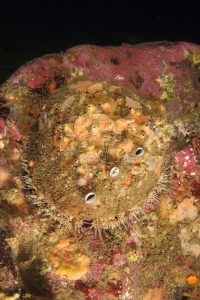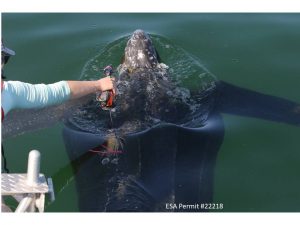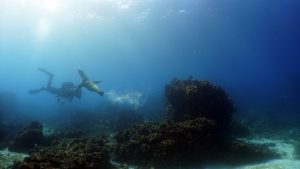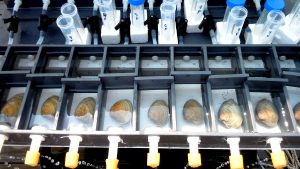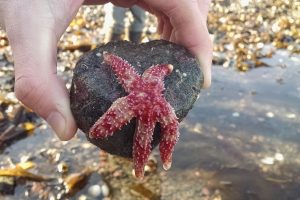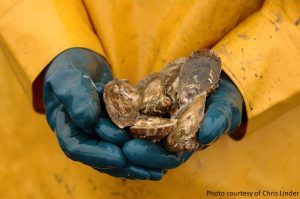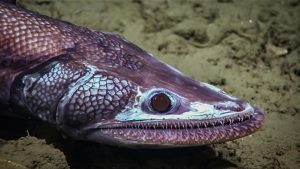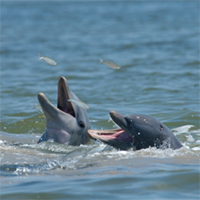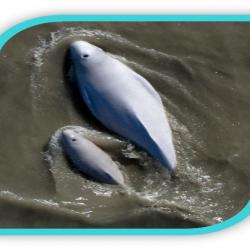Abalone: Gardeners of the Kelp Forest
David Witting, NOAA’s Restoration Center in Long Beach, CA We will learn more about abalone, a group of large snails that live in kelp forest habitats around the world. These humble snails “garden” the kelp forest and ensure there is space for the other plants and animals living there. For thousands of years, people living…
Read MoreSeeing the World Through a Sea Turtle’s Eyes
Samir Patel, NOAA Fisheries Northeast Fisheries Science Center in Woods Hole, MA Sea turtles are considered living dinosaurs in that they have remained relatively unchanged for over 100 million years and yet continue to thrive in our world’s ocean. How are turtles able to do this? We use several camera techniques to film sea turtles…
Read MoreSaving Corals: A Day in the Life of a Coral Reef Scientist
Derek Manzello, NOAA’s Atlantic Oceanographic and Meteorological Laboratory in Miami, FL The mission of NOAA’s National Coral Reef Monitoring Program is to provide information to help improve and sustain coral reef health throughout the world. Meet Derek Manzello, a NOAA coral reef scientist, who dons scuba gear when heading to his office – the world’s…
Read MoreScience on the Half Shell: Behind the Scenes at the Milford Fisheries Laboratory
Mark Dixon and Gillian Phillips, NOAA Northeast Fisheries Science Center in Milford, CT Have you ever wondered what kind of science is conducted at a fisheries laboratory? Meet NOAA scientists from the Northeast Fisheries Science Center’s Laboratory in Milford, CT, who study shellfish and investigate questions that help shellfish growers around the world. You will…
Read MoreWhat’s in the Kelp Forest? Exploring the Shore and Diving Underwater in Kachemak Bay, Alaska
Kris Holderied, NOAA Kasitsna Bay Laboratory, NOAA Ocean Service and Katie Gavenus, Center for Alaskan Coastal Studies Come find out about the unique ecology and research in Kachemak Bay, Alaska! Kachemak Bay is home to a wide variety of animals — sea stars, nudibranchs, anemones, clams and snails, octopus, crabs, all sorts of fish, and…
Read MoreOysters: Nature’s Vacuum Cleaners
Harriet Booth, NOAA’s Woods Hole Sea Grant and Cape Cod Cooperative Extension in Barnstable, MA Have you ever seen or eaten an oyster? How is it different from a clam? Did you know they can filter 1.3 gallons of water per hour and are often put in bays and salt water ponds to clean up…
Read MoreDeep and Creepy: Things that go Bump in the Deep Sea
Kasey Cantwell, NOAA’s Office of Ocean Exploration and Research in Silver Spring, MD A special Halloween edition of NOAA Live! – “Creatures of the Deep” will explore the fascinatingly creepy creatures of the deep ocean. Join us to learn more about the unique animals that exist in the deep sea and the different adaptations that…
Read MoreDolphin Tales – Stories and facts about dolphins and marine mammal strandings in the Southeast US
Blair Mase, NOAA Fisheries Southeast Fisheries Science Center in Miami, FL Is it a fish or is it a mammal? Tune into this presentation full of fun facts about dolphins, their biology, and how we study them. Find out about marine mammal strandings (what is that and why does it happen?), what NOAA does in…
Read MoreThe crab-tivating life of crustaceans: diving into Alaskan snow crab and red king crab biology
Erin Fedewa and Leah Zacher, NOAA Fisheries Alaska Fisheries Science Center’s Kodiak Laboratory in Kodiak, AK Join us as we learn about red king crab and snow crab, two species of crab found in Alaskan waters. Guest appearances from live crab at the Kodiak Fisheries Research Center and a virtual dissection will help us explore…
Read MoreBaby Beluga in the Shallow Gray Sea – looking for newborn whales with drones in Cook Inlet, Alaska
Kim Goetz, NOAA Alaska Fisheries Science Center in Seattle, WA Learn about the endangered population of Cook Inlet beluga whales which regularly swim past local Anchorage landmarks such as the Port, Kincaid Park, the airport, and Bird Point in Turnagain Arm. We will talk about how belugas live, see cool photos of them taken from…
Read More
